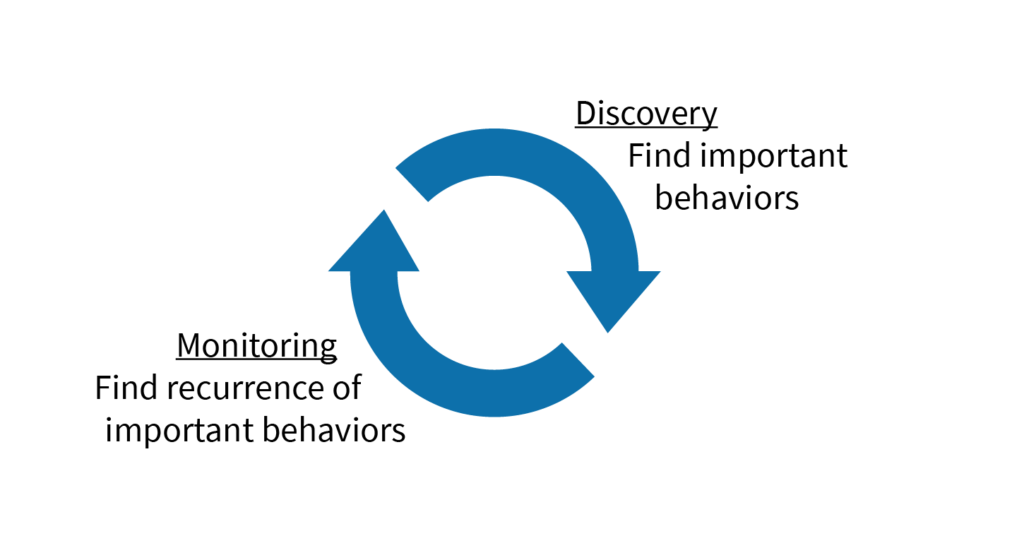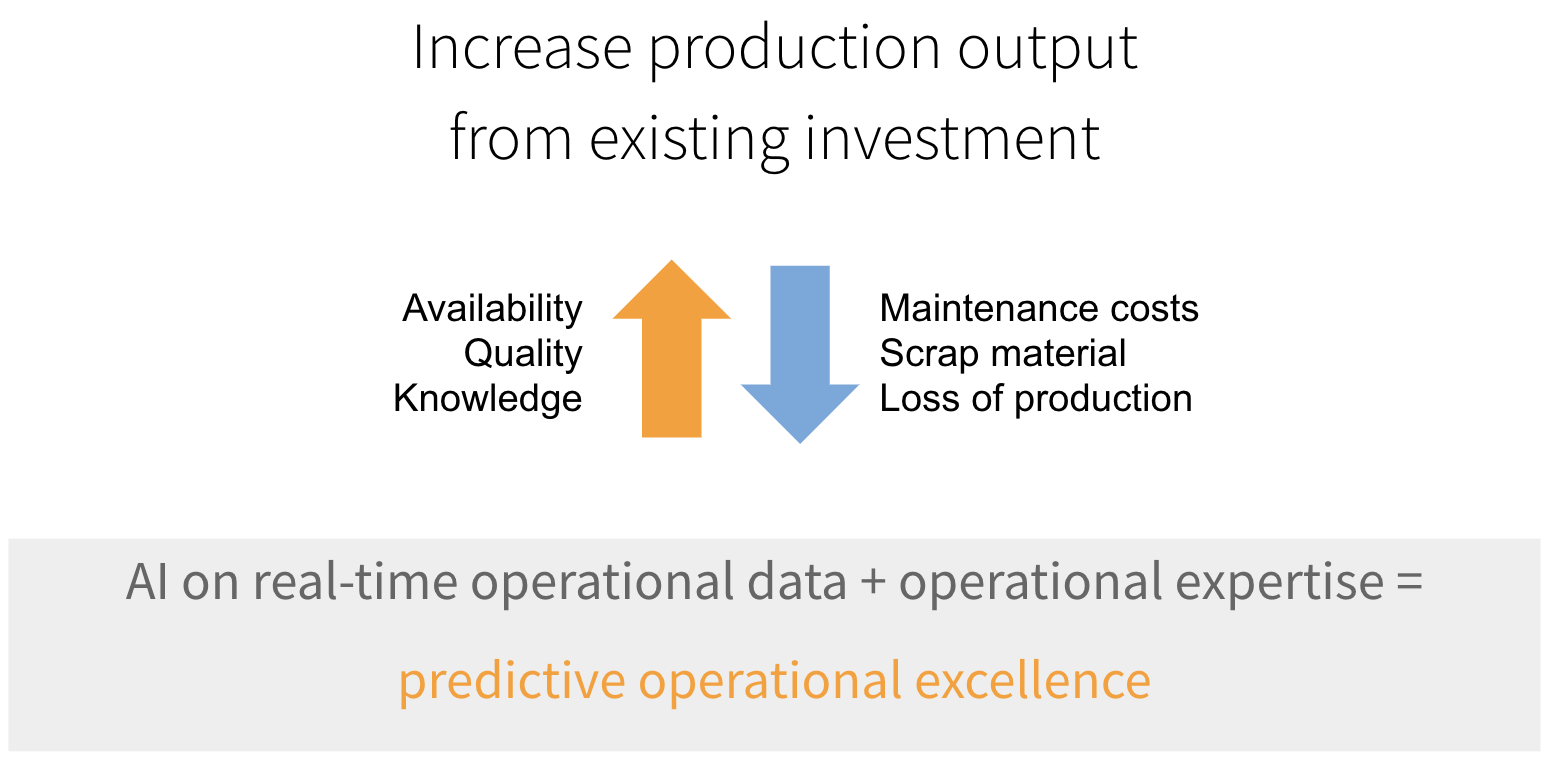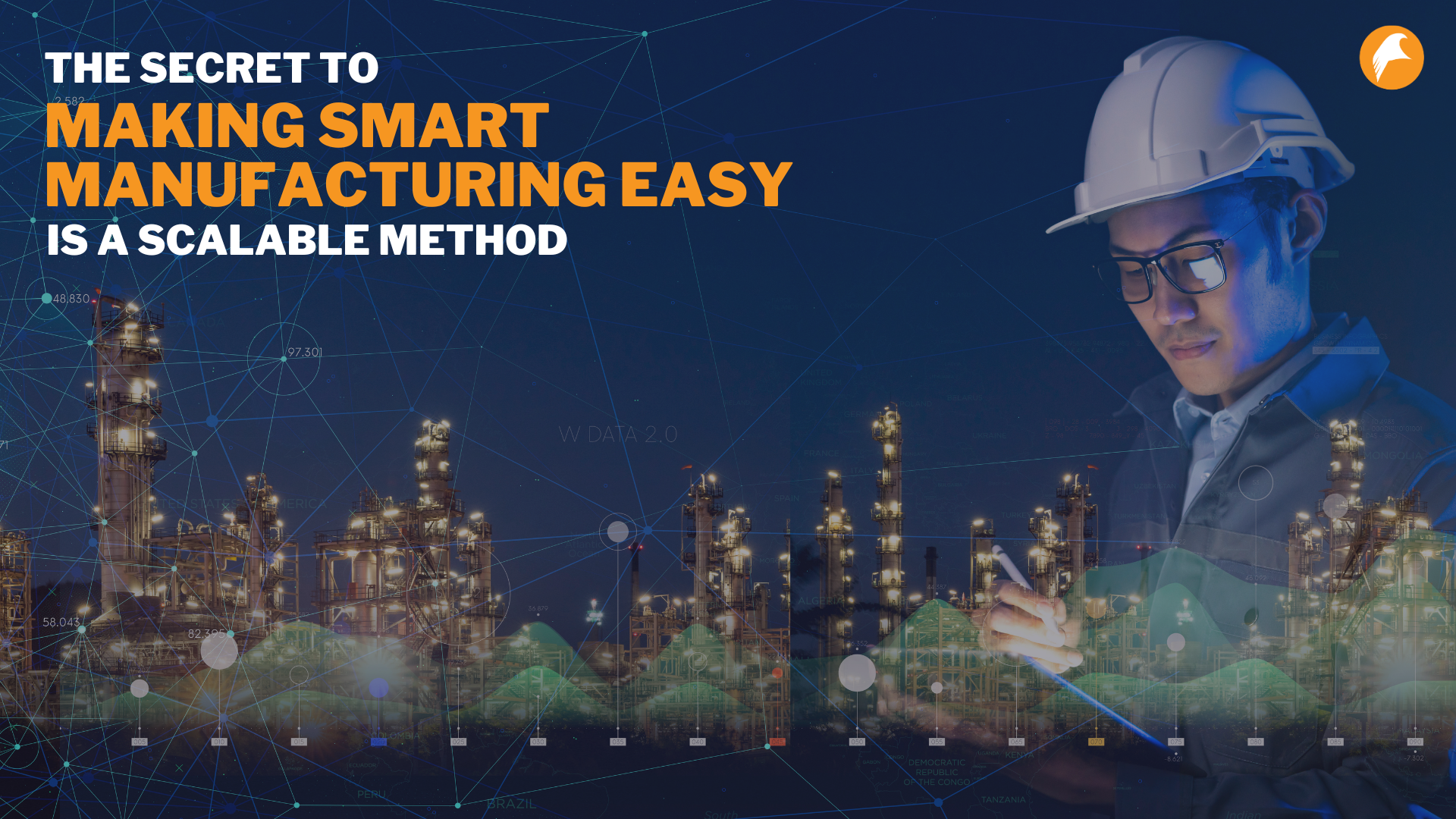Discovery and Monitoring – The PB&J of time series AI
Key takeaways:
- Discovery is the process of finding where to pay attention
- Monitoring is the process of paying attention to what is important
- Both discovery and monitoring are essential for optimal operations
Peanut butter and jelly, Fred Astaire and Ginger Rogers, Bert and Ernie. Like all famous pairs, distinct yet inseparable. In the area of predictive operations, the (not so) famous pair you should get acquainted with is Discovery and Monitoring. These are two sides of the same coin – both are necessary for maximizing asset performance.

Discovery: “Where do I start?”
“Where do I start understanding the real world behavior of this equipment?” is one of the most common questions our customers ask. Systems are complex and not always well characterized by the time they are deployed in the field. Take for example the Navy’s DDG-1000 class of large surface combatants (LSCs). These represent some of the most advanced, highly instrumented technology in the US military. In some ways, these ships can be viewed as a step in the digital transformation of defense. “Inserting … systems into DDG-1000 throughout the next decades and then improving on them, based on their operational effectiveness and ability to deal with emerging threats, will define what the Navy will look like—and how it can fight—in the future.”
In a system as complex as a guided-missile destroyer, particularly one that was designed as a platform to demonstrate and characterize the latest technology, there will be new behaviors and new conditions occurring regularly. A major challenge is separating the interesting new behaviors from the “noise” of normal operation. It is a special challenge in vessels like these that employ extensive redundancy and on-the-fly configurability in order to ensure survivability. This is a classic needle-in-a-haystack problem. Using statistics and human-defined rules to identify issues is not the best tool for this kind of task. With high volumes of data producing an unmanageable number of alarms, pattern discovery through machine learning is the only approach which can scale with the sensitivity required for success.
Falkonry’s time series AI platform highlights novel behaviors within and between the ship’s sub-systems, is a powerful means of picking out important events even where the exact nature of the root cause is poorly understood or not previously seen. Using the pointers to novel behavior and information provided by the AI to highlight the most important signals, engineers can quickly drill down to the right components, perform root cause analysis and document recovery procedures for sailors to follow.
Monitoring: “Is X happening?”
“Is X happening,” along with “when will X happen,” are the most important questions for the team running and maintaining a deployed system. Returning to the LSC advanced technology example, high levels of instrumentation produce extremely high volumes of raw data. Simple alarming systems, based on statistics or design specifications, even when set to capture only 3-sigma events, can still produce an overwhelming number of alarms per day, hindering the sailors’ ability to understand and respond. Too many alarms is the same as none at all.
Cutting through this noise requires an approach that is tuned to specific events of interest. Be that a valve sticking, which eventually leads to a generator failure or a pattern of electrical current fluctuations, which lead to a breaker trip sending power conversion equipment offline, detecting the known events that lead to failures is an important but difficult task.
Falkonry’s time series AI recognizes patterns it has seen in prior examples. This multivariate pattern recognition approach is both specific and sensitive. This reduces the number of false alarms that statistical and rule-based approaches often produce while remaining sensitive to the events of interest. Falkonry’s classification-based approach also allows SMEs to match patterns to names and to connect them to next steps and remedies. This contextual information can be used by sailors to identify the diagnostic and recovery procedures they should use to resolve each problem. In this way, Falkonry provides directly actionable guidance from experts to sailors for speeding up repairs or taking other actions.
Discovery and Monitoring: Creating the virtuous cycle is difficult
In any real-world application, BOTH of these questions: “where do I start?” and “is X happening?” need to be answered. Inadequate discovery results in monitoring gaps because it isn’t clear what is important to find. Likewise, an incomplete monitoring approach results in the operational team being unable to use the discovery work that was done to see the problems that they know exist.
Too often the goal of evaluating technology for digital transformation, whether military or industrial, is framed as answering one question or the other: discovery or monitoring? This frequently happens because of the stage of a particular project. For example, early-stage Industry 4.0 projects frequently focus on discovering the problems – what does this approach show me about the range of curing defects that R&D is concerned about or what can we see in the operating cycle data that might be helpful in optimizing the drying process? Late-stage, mature projects tend to focus heavily on monitoring systems to help manage day-to-day operations – can the software predict this specific kind of pump seal failure at least 3 days in advance so that I can arrange preventive maintenance or can it detect weld voids in-situ with 90% accuracy so that I can safely reduce manual inspection? This narrowing of focus, while natural and common, results in technology choices that are made by looking at only half of the problem.
The DDG-1000 class of ships present an enlightening case where the system is intended to both characterize new technologies and to achieve mission success in the real world. This juxtaposition highlights the challenges that all complex systems face: controlling what is known (monitoring) while also actively seeking and characterizing what is unknown (discovery). New learning powers effective control, which makes it easier to find new behaviors, which leads to even better control – a virtuous cycle.

Falkonry’s time series AI platform is designed to implement this virtuous cycle of discovery and monitoring in ways that other software cannot. Contact us today to learn more about this new dynamic duo.





